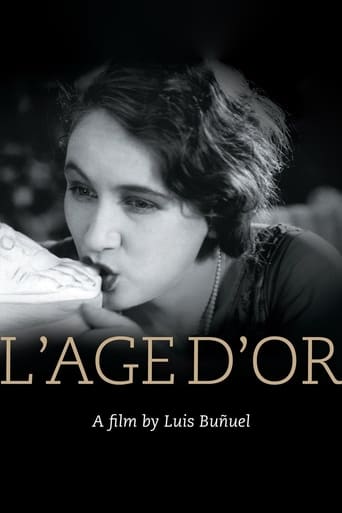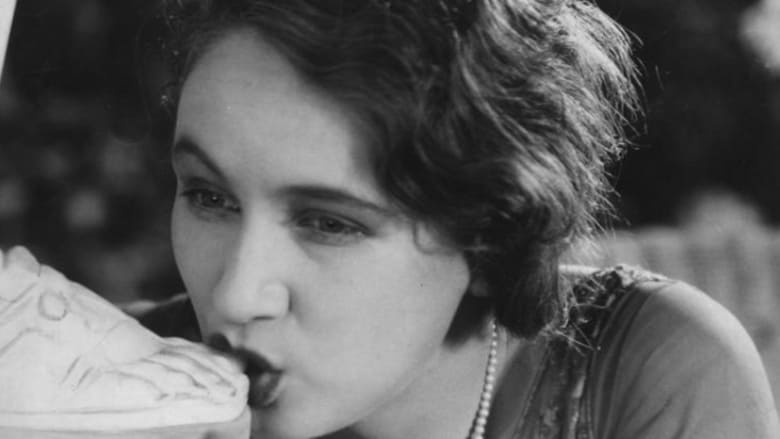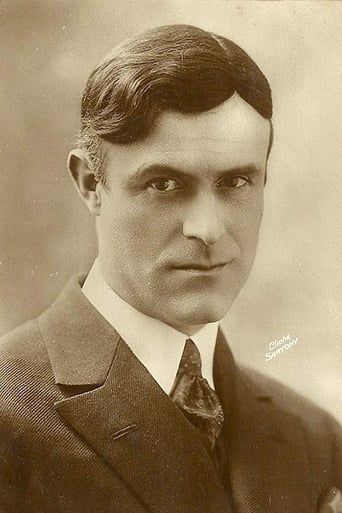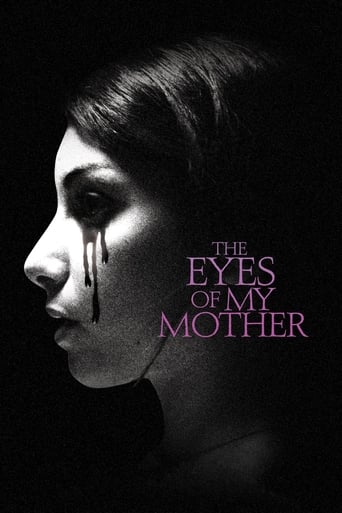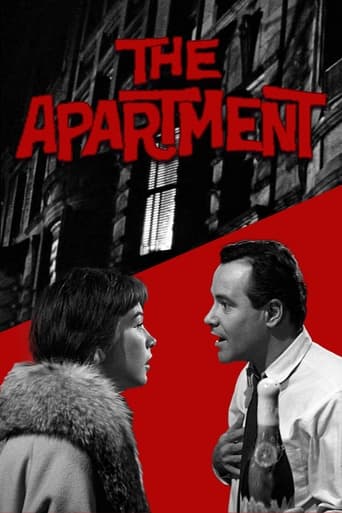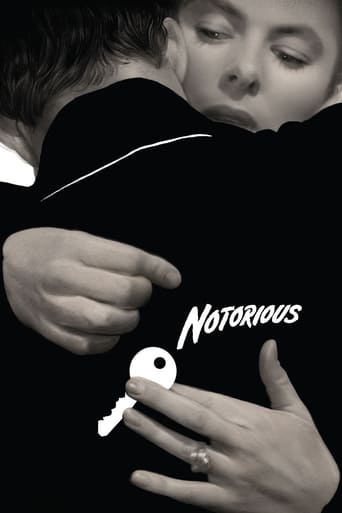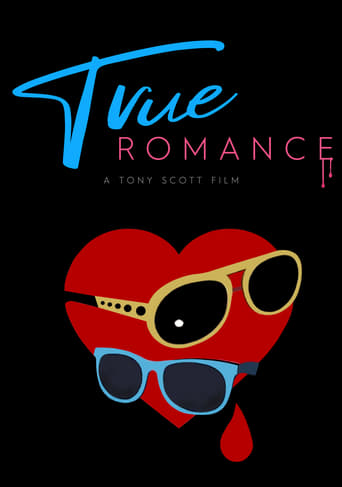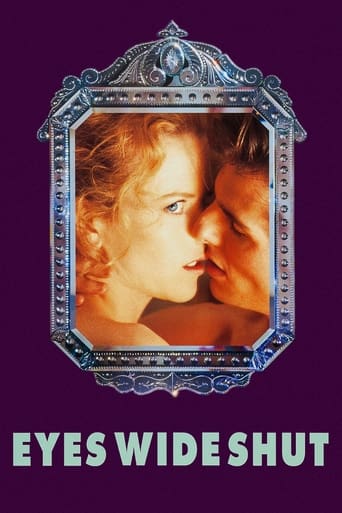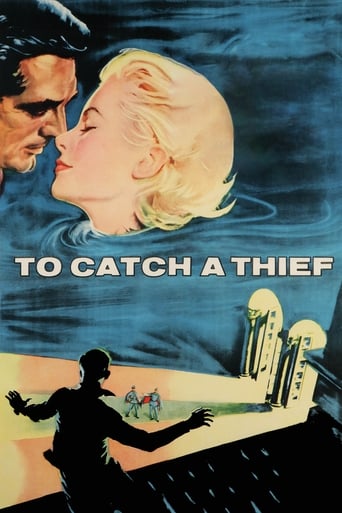L'Âge d'or (1930)
The film consists of a series of tightly interlinked vignettes, the most sustained of which details the story of a man and a woman who are passionately in love. Their attempts to consummate their passion are constantly thwarted, by their families, by the Church and bourgeois society in general.
Watch Trailer
Cast


Similar titles
Reviews
This movie is the proof that the world is becoming a sick and dumb place
The film makes a home in your brain and the only cure is to see it again.
The joyful confection is coated in a sparkly gloss, bright enough to gleam from the darkest, most cynical corners.
The story, direction, characters, and writing/dialogue is akin to taking a tranquilizer shot to the neck, but everything else was so well done.
Since having heard his name mentioned for the first time in connection to Alfred Hitchcock and Dario Argento on the info packed commentary by Alan Jones and Kim Newman's for Argento's classic debut The Bird With The Crystal Plumage,Luis Bunuel has been a director who I have become pretty keen on taking a look at.Whilst almost getting myself caught up in an endless back and fourth struggle over trying to decide what Bunuel film I should go for,I thankfully got a bit of luck,when I recently found his very first film being sold at a fantastic price,which led me to deciding that my first Bunuel would also be the first ever (non short) film that he made. The plot:Soon after they have started to passionately kiss each other like two wild animals,a young couple are pulled apart by a group of consisting of their families,police officers and priests who object so strongly to what the couple are doing on the beach,that they beat up the man in broad daylight on the beach.Taking the man to a police station,the man catches the two cops by surprise,by quickly knocking them out so that he can run to the house where his lover is staying with family.Meanwhile,whist the couple are attempting to get together,a long,disgusting orgy attended by some very unexpected participants finally reaches it end. View on the film:As this very entertaining,interesting surrealist film opens with some re-used old documentary footage (featuring a new narration) about scorpion tail's, Luis Bunuel and co-writer Salvador Dali (who would have a huge falling out with Bunuel shortly before the beginning of the films production)set up the scorpion "sting" for each section of the movie.With the beginning of the film having shown the ruthless behaviour of animals,Bunuel cleverly uses the minimalist soundtrack to feature animal sounds that connect the characters to primal instincts which the church and other "higher up" sections of society are attempting to destroy,from the sound of birds being used when the couple start to kiss each others hands,to raw sewage (!) being inter-cut in the scene where the unnamed man is getting beaten up and punished like an animal.Along with the soundtrack,Bunuel's directing also features a good number of stunning transitional/fading in/out shots that along with focusing on the beautiful features of lead actress Lya Lys, (whose performance gives the character a fantastic china doll-like fragileness,shows that she is an actress who should have been bigger than she sadly became)also help to make the 63 minute running time fly by,thanks to each transition bringing a new piece of the scorpions tail to this sometimes messy,but always fascinating film.
This movie is something. Exactly what it is I don't know! But if I did, then I guess Bunuel and Dali wouldn't have accomplished what they set out to do.It's full of haunting images and haunting juxtapositions of classical music and image (the uses of Wagner's Prelude and Liebestod from Tristan and Isolde are especially striking!). The randomness of these images and scenes may put off some viewers, and it did take me a while to get into it, but they're likely to stick in viewers' minds for some time. In a way it reminds me of Bunuel's later The Discreet Charm of the Bourgeoisie, except this one has a couple's lovemaking constantly thwarted instead of dinner. While I didn't find this one to be quite as solid as that film, it certainly had its strengths.And I couldn't believe how despicable our hero was! Some of the things he does in this film are so wretched it's hilarious (such as punting a poor little doggy!). I also can't imagine that using the image of Christ in a scene based on the 120 Days of Sodom did much for the filmmakers' popularity at the time, but it is a striking way to end the picture. Last but not last, I just have to mention my favorite insane line from the movie: "What joy! What joy! To have murdered our children." This said by our heroine-of-sorts with a rapturous smile on her face.
I'm a big fan of surrealist art, but this film by Bunuel (with some ideas from Dali) left me cold. Bunuel had a life-long grudge against the Catholic church and delighted in trying to offend Catholics in fairly silly ways. This is one of the silliest; almost like what you'd expect from a smart-aleck 18-year-old in film class. The last few minutes of the movie, which have nothing to do with anything else, are a final nose-thumbing at religion.If you read the "scholars" regarding this slow-paced, occasionally amusing film, it's all about how the church and society are guilty of sexual repression. If that is indeed the point, then Bunuel expresses it in the most roundabout fashion possible. The central male character is a nasty brute who loves kicking dogs and knocking blind men down in the street, and who mentally turns billboard ads into strange sexual fantasies. Is this behavior the church's fault (for interrupting his lovemaking), or is he just a jerk? I vote for the latter. I think Bunuel must have had a lot of personal hangups and chose the Catholics as the ones to blame.There are a few moments where you might cry, "Aha! surrealism!": a cow in a bed, a giraffe falling out a window (a poor model), a man shredding a feather pillow, a woman flushing a toilet while we watch pictures of seething lava (or a mud pit...hard to tell in B/W). The rest is forgettable self-indulgence. Unfortunately, Bunuel was still chasing the same bogey-men through the rest of his career (Viridiana, Discreet Charm...). If you're interested in seeing surrealism on the screen, check out Jean Cocteau's early work.
In the Tate Modern's "Dalí & Film" exhibition, the fourteen-odd rooms were mostly paintings but three or four had films of one kind or another. Having just seen Un Chien Andalou I decided to watch this one as well and was lucky to catch it just as it started. I say lucky because there is really nothing to tell you when these things are starting or ending. This is maybe OK with a short film that lasts seven minutes or a three minute clip from Spellbound but with a film that lasts an hour I really don't understand why the Tate didn't make at least a discrete effort to let us know start times maybe it is beneath them to act like a cinema but it does mean that people were constantly flowing in and out and the implication is that the films can be just dipped in and out of.With this film though, you do need to be in from the start because, unlike Un Chien Andalou, there is more of a plot here and the film has fewer of Dalí's images across the running time. That said the plot here isn't any easier to follow if you did manage to catch it from the very start because this is still very much a surrealist film in structure and content even if it has fewer of the images that made the first film I'd seen so engaging. With Buñuel forming more of the film than Dalí, the film does take on more symbolism in less surreal ways but yet it is still quite hard to follow. To me as a viewer this was a bit of a downside because there was less to stimulate me and more to frustrate me as I struggle to understand the meaning of what I was watching.Despite this I still did find it interesting and you can see why (to a point) that the screening did draw a reaction from those that saw it as attacking conservative values in its depiction of violent attacks etc. Quite why it was hardly screened for fifty years though, I can't say. With a difficult plot to follow and an hour to watch, the film asked a lot of me and I'm afraid I wasn't really up to the challenge and I did struggle to follow along. The scattering of surrealist imagery did help to hold my attention though and it is not without value just a lot harder to watch than I would have liked it to have been.

